
Ad testing on major platforms involves tailoring creative evaluation to each channel’s unique formats, audience expectations, and technical constraints. Each platform demands different creative styles, lengths, and visual compositions—from Facebook’s mix of video and images to TikTok’s fast-paced vertical clips and YouTube’s longer storytelling formats.
Marketers must optimize ads specifically for each environment to maximize impact and efficiency. Tools like Neurons AI support this by allowing users to set campaign objectives aligned with the platform’s nuances and receive immediate feedback on how to improve ads accordingly.
For a deeper dive into mastering platform-specific advertising, watch our webinar: How to Master Platform-Specific Advertising.
To explore how platform-specific strategies fit into the bigger ad testing picture, check out the full ad testing guide.
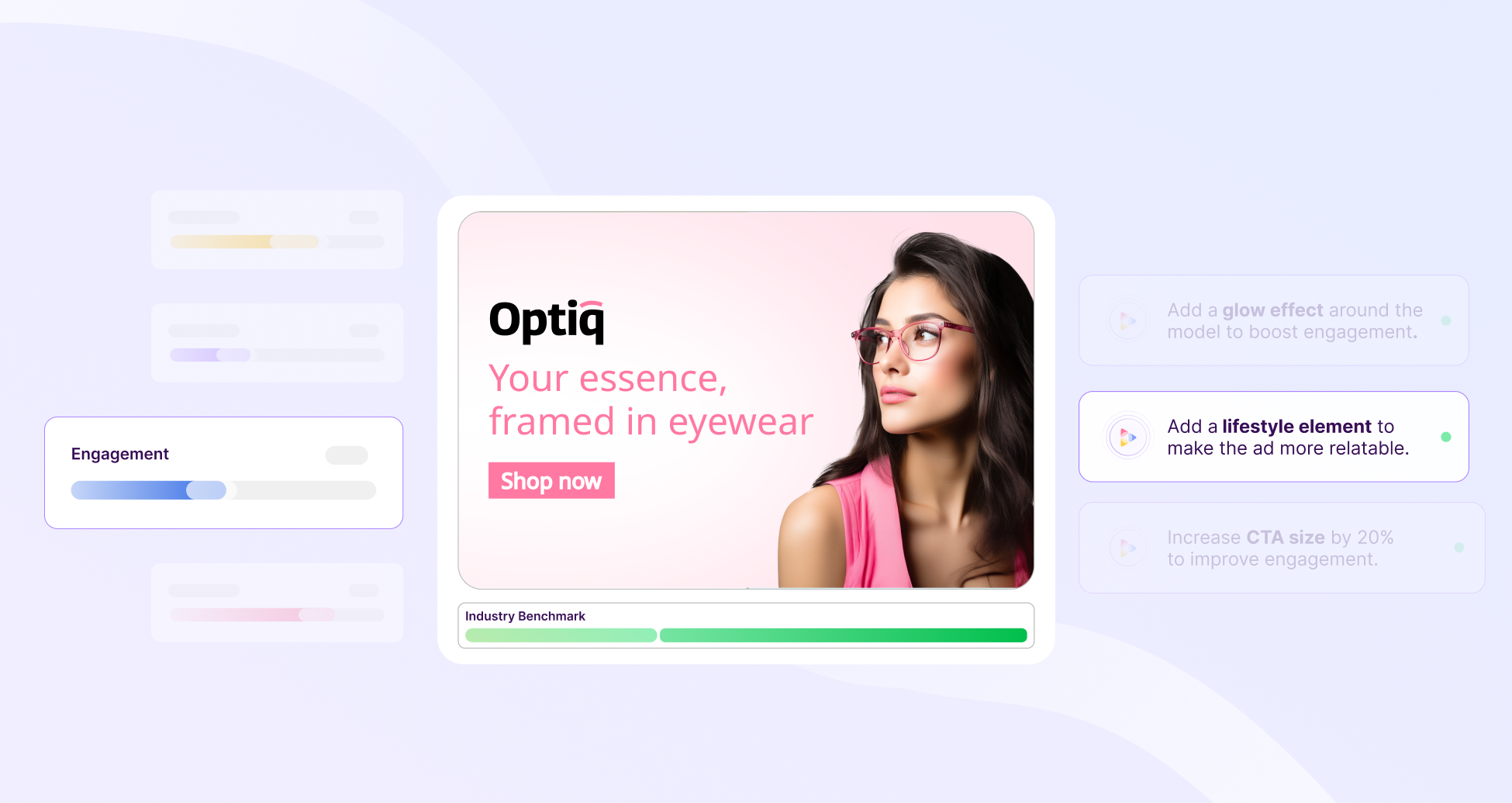
Facebook and Instagram offer a diverse range of ad formats, including Stories, Reels, feed posts, and in-stream videos. Each format requires a creative approach tailored to its unique placement and audience behavior.
Understanding how vertical and square formats affect viewer attention is crucial. Neurons AI supports this by analyzing ad visuals within these specific layouts, helping marketers quickly identify which creative elements engage users best. This insight works alongside Meta’s native tools to refine ad performance.
By combining AI-driven visual optimization with Meta’s A/B testing, brand lift, and engagement analytics, advertisers can craft campaigns that resonate across Facebook’s and Instagram’s varied environments.
Key ad testing features on these platforms include:
Meta’s A/B testing tools allow advertisers to compare different versions of ads or campaigns to see which performs better. These experiments isolate variables such as creative elements, audience segments, or placements to optimize results.
By systematically testing and measuring outcomes like clicks and conversions, marketers reduce guesswork and improve campaign effectiveness. Integrating these tests with insights from Neurons AI can further refine which creative changes truly boost attention and engagement.
Brand lift tests on Facebook and Instagram measure how ads impact brand awareness, perception, and intent. This involves surveying exposed and control groups to understand shifts in metrics like ad recall and brand favorability.
These tests help marketers quantify the longer-term value of their advertising beyond immediate clicks, enabling better strategic decisions.
Facebook’s Ads Manager includes tools for testing creative variations within campaigns. Marketers can experiment with different images, videos, headlines, and calls-to-action to see which versions resonate best.
Using real-time data, this feature allows quick adjustments that improve overall ad performance. When combined with Neurons AI’s predictive insights, it enhances creative decision-making by predicting which elements will capture attention.
Facebook provides metrics on how long users spend viewing an ad, how far they scroll, and their engagement behaviors such as reactions, comments, and shares. These data points reveal how effectively the ad holds attention.
Marketers use this information to fine-tune creative pacing and placement strategies, aiming to increase meaningful interactions.
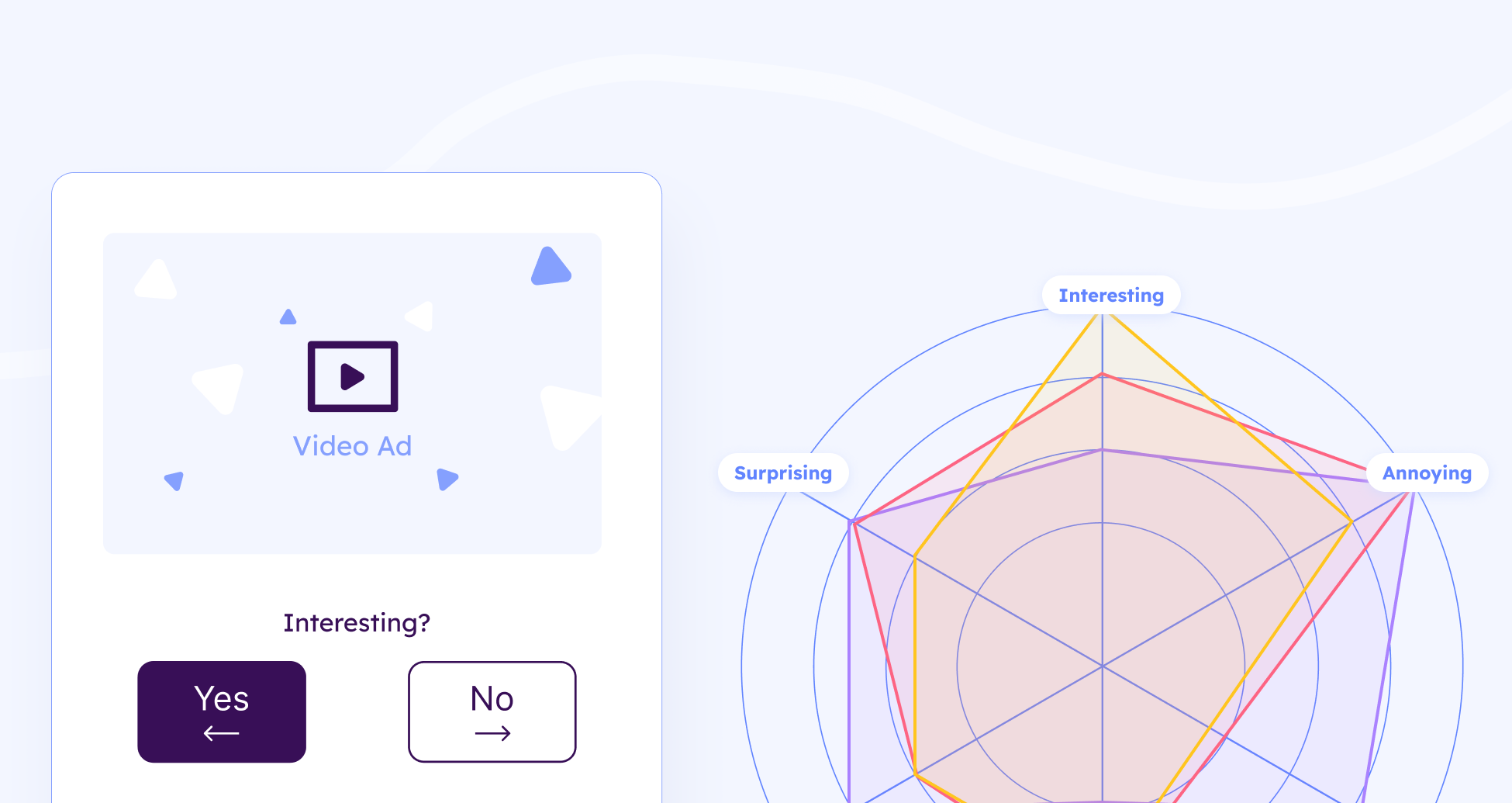
YouTube is a primarily video-focused platform where ad testing centers on video length, storytelling quality, and viewer retention across devices. The horizontal screen format and expectation for richer narratives require a different creative approach than shorter-form social platforms.
Neurons AI complements YouTube’s testing tools by simulating how viewers engage with video content, helping marketers optimize pacing and memorability before launch. This predictive insight supports better alignment with audience expectations for immersive storytelling.
Key YouTube ad testing features include:
YouTube Brand Lift measures how exposure to video ads influences brand awareness, recall, and consideration. Through surveys comparing exposed and control groups, marketers can assess the real impact of their campaigns on audience perception.
This metric helps evaluate the effectiveness of storytelling and creative elements in building brand equity on YouTube.
Video Experiment Campaigns on YouTube enable advertisers to test different video creatives, messaging, or targeting strategies in a controlled way. These experiments help identify which variations perform best in terms of engagement, view duration, and conversions.
By running these tests, marketers can optimize storytelling techniques and ad formats before scaling a campaign.
Testing between skippable and non-skippable ad formats helps marketers find the best balance between viewer engagement and reach. Skippable ads allow viewers to opt out early, while non-skippable ads guarantee full exposure but risk viewer irritation.
By analyzing completion rates, drop-off points, and brand impact, advertisers can tailor their approach for different campaign goals on YouTube.
Audience retention metrics track how long viewers watch an ad before stopping or skipping. High retention rates indicate that the creative effectively maintains interest throughout its duration.
Marketers use retention data to refine pacing, messaging, and story structure to keep viewers engaged longer. This is especially important for YouTube, where longer-form content is common.
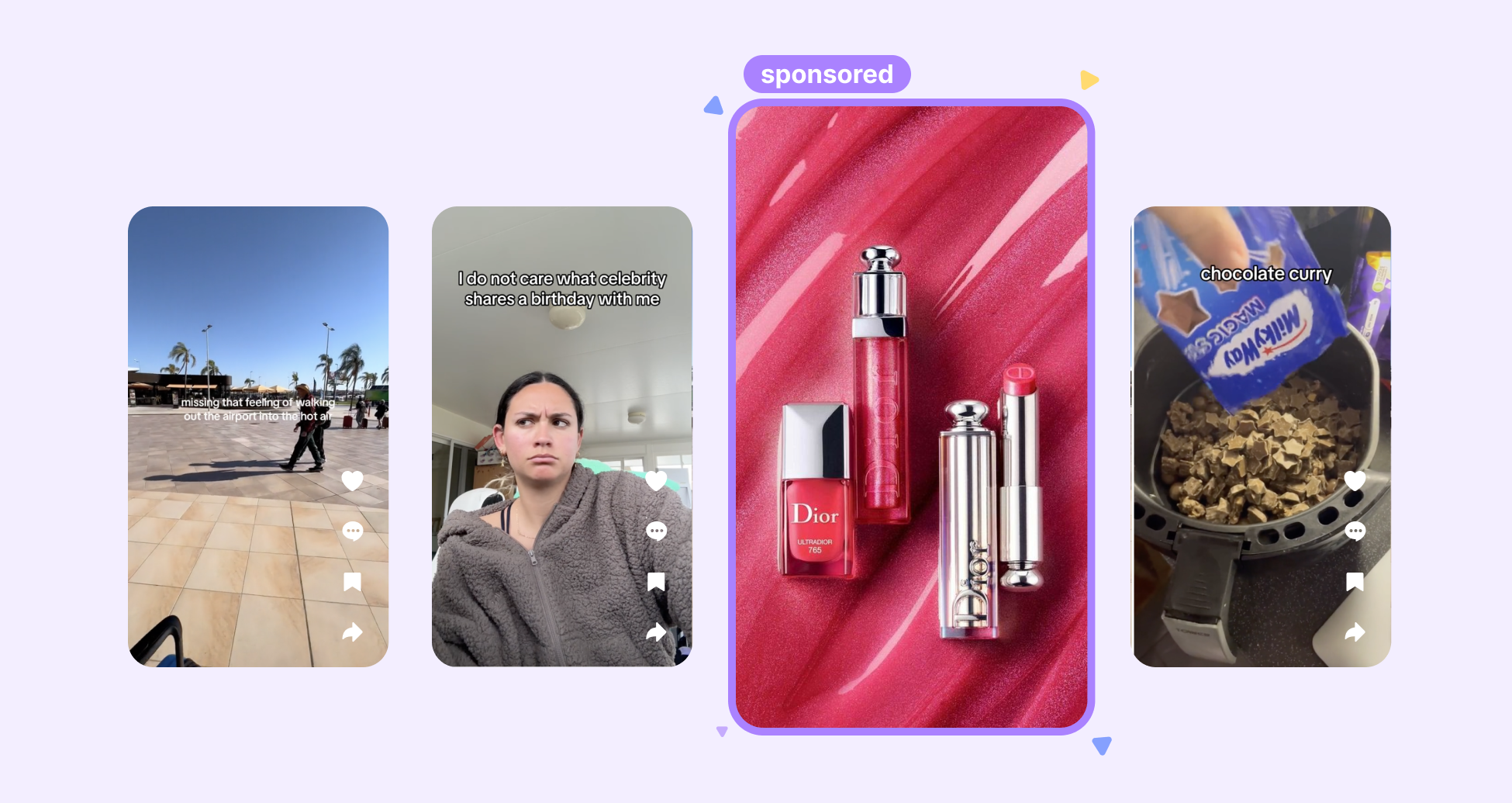
TikTok thrives on fast-paced, vertical, bite-sized videos designed to capture attention immediately. The platform’s younger, trend-driven audience expects highly engaging, visually dynamic content tailored for mobile screens.
Neurons AI helps marketers optimize TikTok creatives by predicting which visual elements will grab attention quickly and sustain engagement within the platform’s vertical video format. This allows advertisers to rapidly iterate on content that fits TikTok’s unique style and user behavior.
Key TikTok ad testing tools include:
TikTok Creative Center provides insights into trending content, popular formats, and audience preferences. Marketers use this tool to benchmark their creatives and gather ideas aligned with TikTok’s culture.
It also supports A/B testing to compare different video versions and optimize performance.
TikTok Ads Manager offers built-in A/B testing tools that allow advertisers to compare creative variations in real-time. These tests help identify which hooks, visuals, or calls-to-action drive the best engagement and conversions.
Combined with Neurons AI’s predictive insights on visual attention, this empowers marketers to fine-tune ads tailored for TikTok’s fast-moving feed and vertical format.
Engagement benchmarks on TikTok track metrics like watch time, likes, shares, and comments to gauge how well an ad resonates with viewers. High engagement signals that the creative connects with TikTok’s trend-driven audience.
Marketers analyze these benchmarks to refine content pacing, storytelling, and interactive elements, ensuring ads hold attention in a highly competitive feed.
Testing sound on versus sound off scenarios helps advertisers understand how audio elements impact ad effectiveness on TikTok. Since many users watch videos muted initially, ads must communicate visually and through sound.
Marketers experiment with captions, visual cues, and music to optimize ads for both listening preferences, ensuring the message is clear whether sound is on or off.
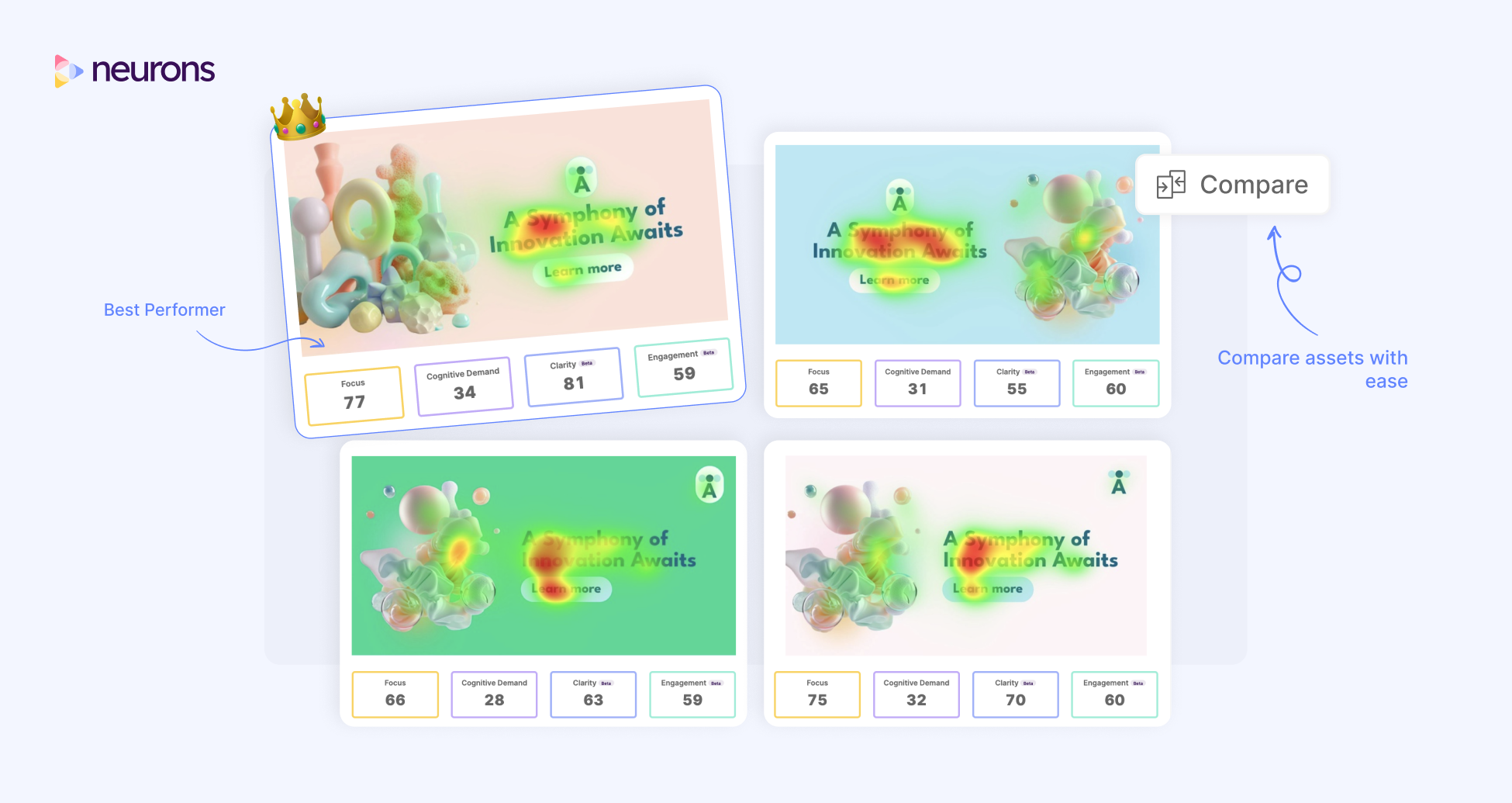
LinkedIn serves a professional audience with ads ranging from sponsored content to lead generation forms. Testing on LinkedIn requires attention to messaging tone, content relevance, and the effectiveness of different ad formats in B2B contexts.
Neurons AI helps marketers optimize LinkedIn creatives by analyzing visual and messaging elements tailored to professional demographics and platform norms. This complements LinkedIn’s native testing tools by predicting which creatives will hold attention and drive action among business audiences.
Key LinkedIn ad testing tools include:
LinkedIn’s Campaign Manager includes A/B testing capabilities to compare different creatives, audiences, and placements. This allows marketers to refine messaging and format based on real-world engagement and conversion data.
This testing compares the effectiveness of direct message ads against sponsored content in the feed. Marketers evaluate which format better drives engagement, lead generation, or brand awareness, depending on campaign goals.
This test compares the performance of lead generation forms embedded within LinkedIn against ads that direct users to an external website. Marketers analyze conversion rates, cost per lead, and user experience to determine the most effective approach.
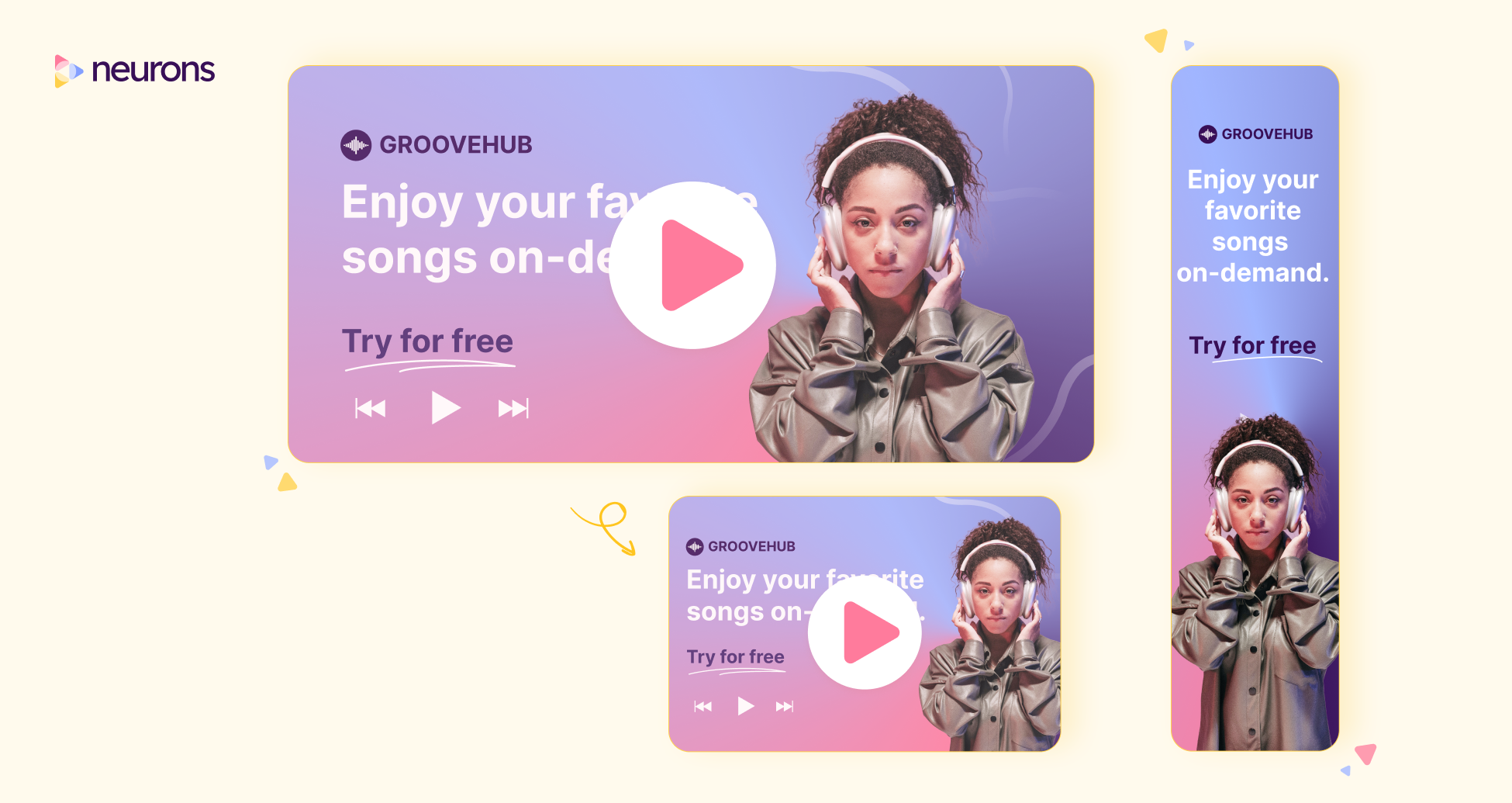
Google’s display and search networks offer vast reach across varied formats, from text ads to rich media and video. Testing here focuses on optimizing keywords, creative assets, and audience targeting for diverse placements.
Neurons AI supports Google ads by analyzing visuals and messaging tailored to both display and search environments, helping marketers predict which creatives will perform best on these distinct formats. This complements Google’s native experiments and responsive ad testing tools.
Key Google ad testing features include:
Google Ads Experiments allow advertisers to run controlled tests comparing different campaigns, creatives, or bidding strategies. Marketers use these tests to optimize ROI and conversion rates based on real-time data.
Responsive Search Ads let advertisers test multiple headlines and descriptions by automatically mixing them to find the best combinations. This helps identify messaging that resonates most with searchers.
Marketers use this to optimize ad relevance and improve performance without manually testing each variation.
This method tests different image and video creatives within display campaigns to see which visuals drive higher engagement and conversions. Marketers compare versions to optimize visual appeal and messaging effectiveness.
By analyzing performance data, advertisers can refine their creative assets to better capture audience attention across Google’s vast network.
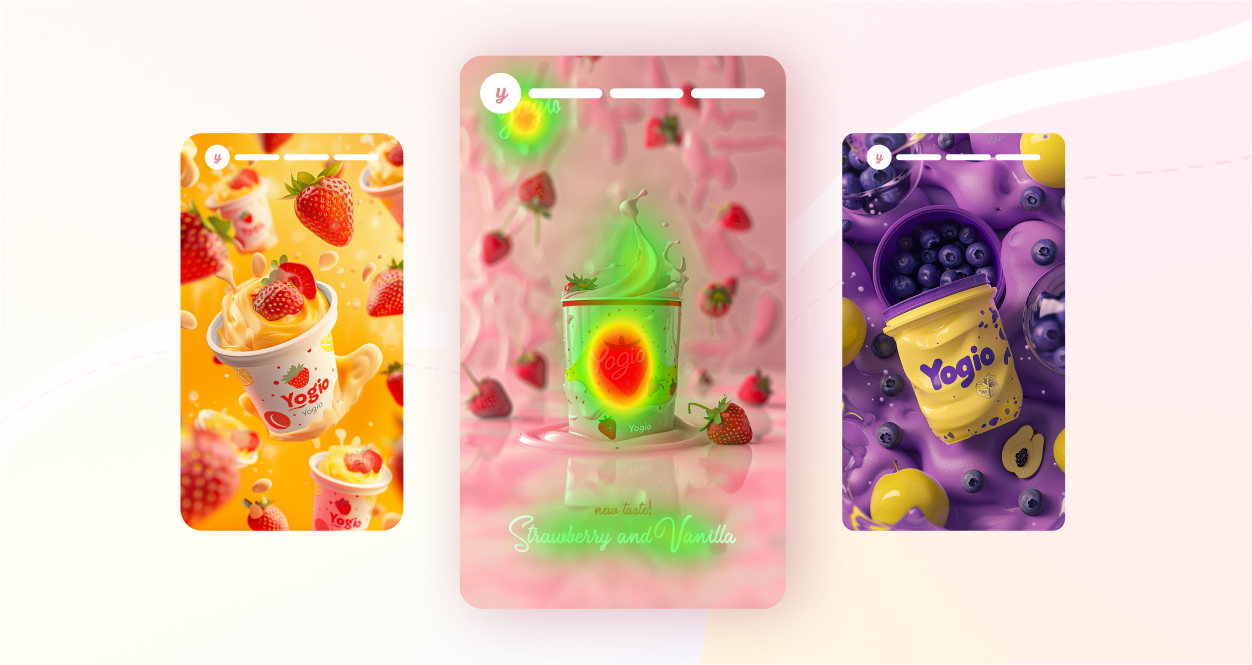
Pinterest is a highly visual platform where ads blend seamlessly with organic content, emphasizing inspiration and discovery. Testing on Pinterest focuses on visual appeal, pin format, and audience interaction.
Neurons AI helps marketers optimize Pinterest creatives by predicting which images and layouts will stand out in users’ feeds, taking into account Pinterest’s vertical format and discovery-driven behavior.
Key Pinterest ad testing tools include:
Idea Pin Testing involves experimenting with multi-page, interactive content formats unique to Pinterest. Marketers evaluate which ideas resonate best by tracking engagement and completion rates.
Performance split testing compares different creative versions or targeting setups to determine which drives better results on Pinterest. This method helps optimize both visual elements and audience segmentation.
This measures how users engage with Pinterest ads through actions like saves, clicks, and comments. Tracking these interactions helps marketers understand which creatives inspire users to take action.
Testing different visual layouts helps advertisers find the most appealing way to present content on Pinterest’s vertical feed. This includes experimenting with image size, text placement, and color schemes.
Optimizing layout ensures ads stand out while maintaining the platform’s aesthetic harmony.
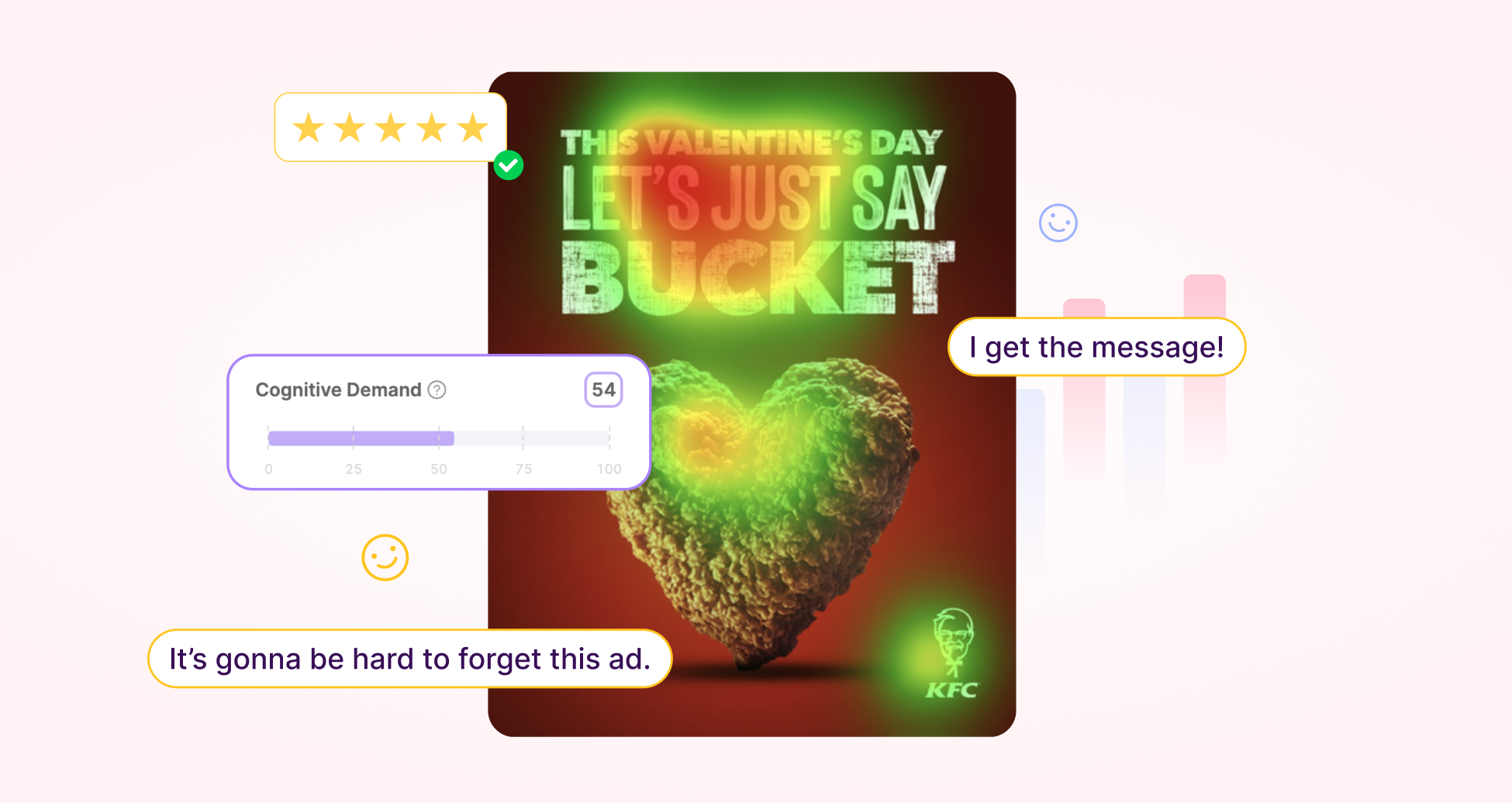
Snapchat focuses on vertical, full-screen video ads and augmented reality experiences that engage younger audiences. Testing here revolves around creative formats, interactive lenses, and ad completion rates.
Neurons AI helps optimize Snapchat ads by analyzing visual components in vertical formats and predicting which elements hold attention among fast-scrolling users. This insight pairs with Snapchat’s native testing tools to fine-tune ads for better engagement.
Key Snapchat ad testing tools include:
Snap Ads testing allows advertisers to run experiments on video and static ads to evaluate performance metrics like swipe-up rates and video views. This helps identify creative elements that drive user interaction.
Testing different augmented reality (AR) lenses helps marketers understand which interactive experiences resonate best with Snapchat’s audience. This involves comparing engagement rates and user interactions with various AR effects.
Story ad completion rates measure how many users watch Snapchat ads through to the end. High completion rates indicate effective pacing and content that maintains viewer interest.
Testing different call-to-action (CTA) buttons and captions helps identify which combinations drive the most clicks and conversions. Marketers optimize wording, placement, and design to improve user response.
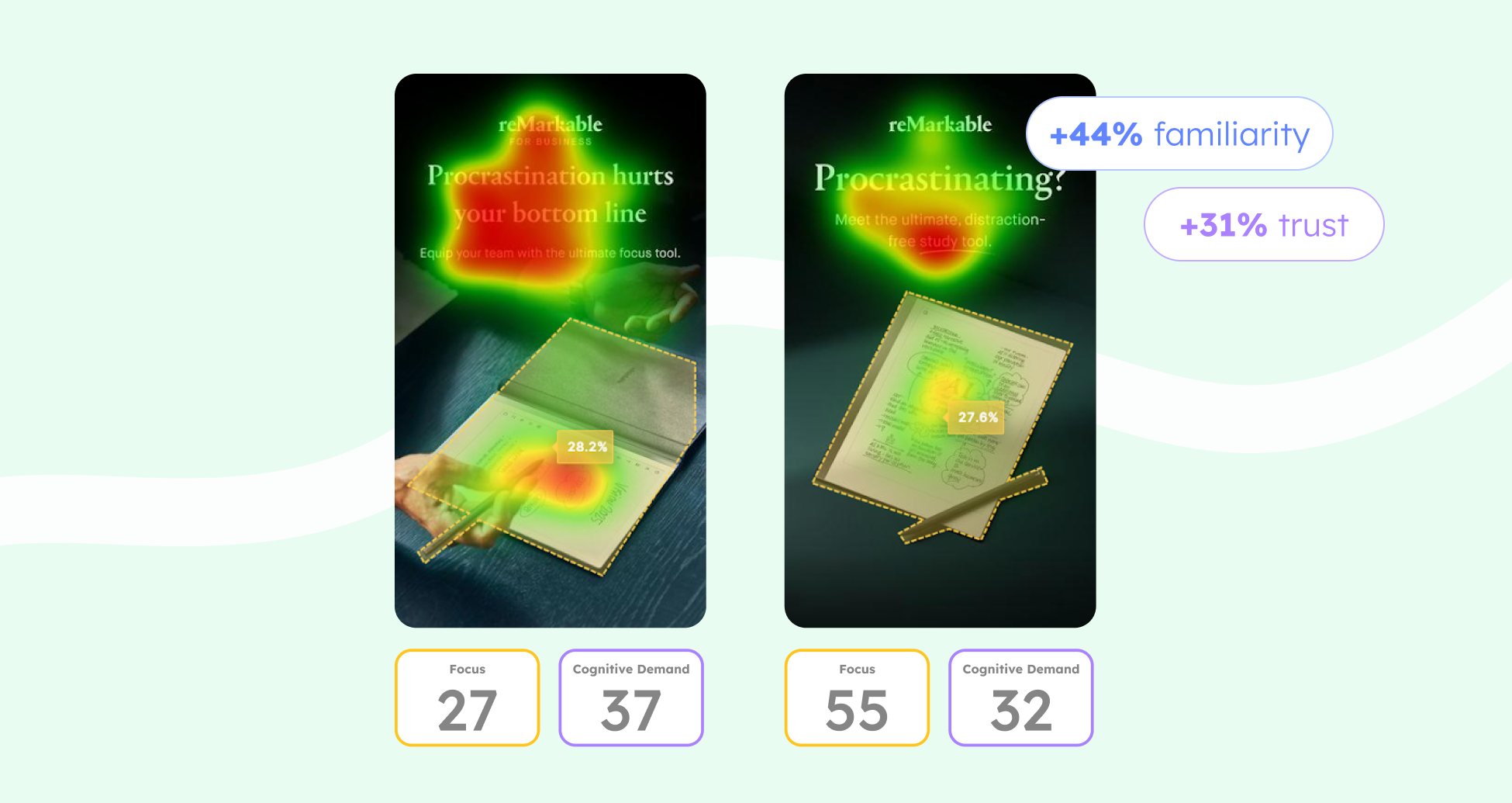
Amazon Ads focus heavily on product discovery and purchase intent with formats like Sponsored Brands and Sponsored Products. Testing here revolves around creative relevance, product detail page engagement, and targeting effectiveness.
Neurons AI enhances Amazon ad testing by evaluating visual impact and message clarity within Amazon’s ecosystem, tailored to different ad placements and shopper behaviors. This complements Amazon’s native analytics and marketing cloud tools.
Key Amazon ad testing features include:
A/B testing allows marketers to compare variations of Sponsored Brand ads to see which creative elements drive higher clicks and conversions. This helps optimize headlines, images, and product selections.
This metric tracks how shoppers interact with product detail pages after clicking ads. Understanding engagement helps marketers optimize product images, descriptions, and reviews to increase conversions.
Custom image testing compares different product images or lifestyle visuals used in ads to determine which drive higher engagement and sales. Marketers use these insights to select images that resonate best with their audience.
Amazon Marketing Cloud (AMC) provides advertisers with granular, event-level data to analyze campaign performance and audience behavior within Amazon’s ecosystem. It enables deep measurement of ad impact and attribution across devices and channels.
Marketers use AMC to test audience segments, optimize creative strategies, and understand incremental effects that drive sales and brand growth.
The table below summarizes how to run ad testing on platforms like Facebook, Instagram, and YouTube.
Each platform demands its own testing lens. What grabs attention on TikTok might get skipped on YouTube, and what works on Meta may fall flat on LinkedIn. The more you tailor your testing approach to the platform, the more accurate—and actionable—your insights will be. Want to build even stronger campaigns? Pair platform testing with the right tools and creative metrics.